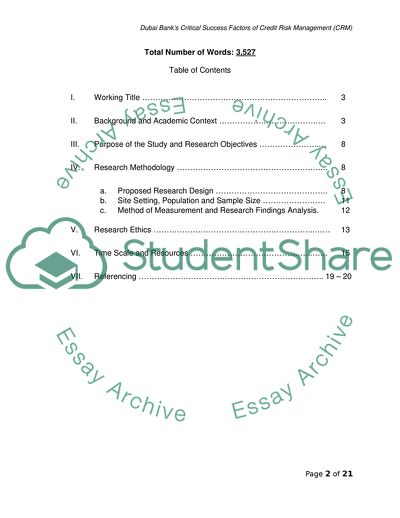Cite this document
(Critical Success Factors of Credit Risk Management (CRM) in one of the Thesis Proposal, n.d.)
Critical Success Factors of Credit Risk Management (CRM) in one of the Thesis Proposal. https://studentshare.org/miscellaneous/1738257-critical-success-factors-of-credit-risk-management-crm-in-one-of-the-uae-local-banks-and-area-which-required-development-to-cope-with-challenges-especially-after-financial-recession
Critical Success Factors of Credit Risk Management (CRM) in one of the Thesis Proposal. https://studentshare.org/miscellaneous/1738257-critical-success-factors-of-credit-risk-management-crm-in-one-of-the-uae-local-banks-and-area-which-required-development-to-cope-with-challenges-especially-after-financial-recession
(Critical Success Factors of Credit Risk Management (CRM) in One of the Thesis Proposal)
Critical Success Factors of Credit Risk Management (CRM) in One of the Thesis Proposal. https://studentshare.org/miscellaneous/1738257-critical-success-factors-of-credit-risk-management-crm-in-one-of-the-uae-local-banks-and-area-which-required-development-to-cope-with-challenges-especially-after-financial-recession.
Critical Success Factors of Credit Risk Management (CRM) in One of the Thesis Proposal. https://studentshare.org/miscellaneous/1738257-critical-success-factors-of-credit-risk-management-crm-in-one-of-the-uae-local-banks-and-area-which-required-development-to-cope-with-challenges-especially-after-financial-recession.
“Critical Success Factors of Credit Risk Management (CRM) in One of the Thesis Proposal”. https://studentshare.org/miscellaneous/1738257-critical-success-factors-of-credit-risk-management-crm-in-one-of-the-uae-local-banks-and-area-which-required-development-to-cope-with-challenges-especially-after-financial-recession.


